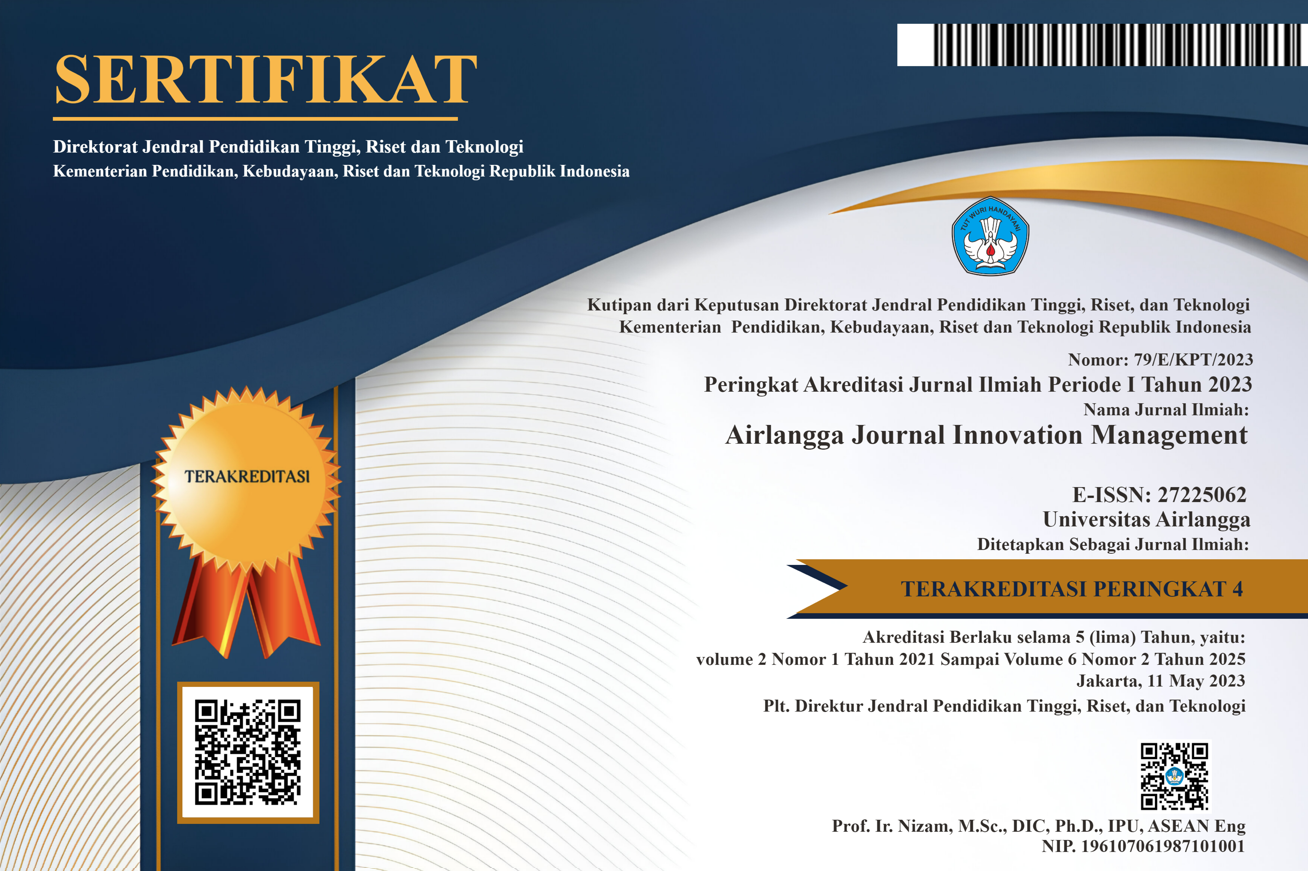A Comparative Analysis of the Determinants of Inflation in Indonesia and Singapore
Downloads
This study aims to analyze the factors affecting inflation in Indonesia and Singapore in the period 2000-2023 using a comparative approach. A quantitative approach was used, employing time series data from the World Bank, BPS (Statistics of Indonesia), and the Singapore Department of Statistics. The analysis method used is multiple linear regression to determine the effect of independent variables (quantity of money, interest rate, exchange rate, and economic growth) and dependent variables (inflation) simultaneously and partially. The results of this study show that independent variables have a simultaneous effect on dependent variables in Indonesia, while in Singapore, they do not. Meanwhile, in part, the quantity of money has a significant negative effect on inflation in Indonesia. Meanwhile, in part, the exchange rate has a negative and significant effect on inflation in Singapore. A comparison of the coefficients and adj. R² values reveal a higher level of sensitivity of inflation to quantitative monetary policy in Indonesia, while Singapore shows inflation resilience through a policy framework centered on exchange rates. These results confirm the differences in the structure and effectiveness of monetary policy, as well as their implications for the formulation of price stabilization strategies in both countries.
Akinsola, F. A., & Odhiambo, N. M. (2017). Inflation and Economic Growth : a Review of The International Literature. Comparative Economic Research, 20(3).
Arifin, A. H. (2024). Ekonomi Moneter. penerbit.wbs-indonesia.com.
Bakti, U., & Alie, maria septijantini. (2018). Pengaruh Inflasi dan Suku Bunga Terhadap Investasi di Provinsi Lampung Periode 1980-2015. Jurnal Ekonomi Pascasarjana Universitas Borobudur, 20(3), 275–285. https://ejournal.borobudur.ac.id/index.php/1/article/view/477
Barone, A. (2022). What Is the Quantity Theory of Money: Definition and Formula. Investopedia.
Beureukat, B. (2022). Pengaruh Suku Bunga terhadap Inflasi di Indonesia. Oikonomia: Jurnal Manajemen, 18(1), 39. https://doi.org/10.47313/oikonomia.v18i1.1546
Chi, M., Gourinchas, P., Leigh, D., & Mishra, P. (2024). Understanding the international rise and fall of inflation since 2020. Journal of Monetary Economics, 148(S), 103658. https://doi.org/10.1016/j.jmoneco.2024.103658
Eklou, K. (2024). Exchange Rate Pass- Through to Inflation in.
Fauziyah, F. (2015). kebijakan Moneter Dalam Mengatasi Inflasi Di Indonesia. 4(1), 83–94.
Hamzah, R. A., Hayati, J., & Yuliani, N. M. (2023). Efektivitas penerapan inflation targeting framework (ITF) terhadap tingkat inflasi di indonesia. The Journal of Economic Development, 5(2), 147–167.
Jordà, Ò., & Nechio, F. (2023). Inflation and wage growth since the pandemic. European Economic Rview, January.
Linh, H. T. D., & Thu, N. A. (2022). Effect of Exchange Rate Pass-Through On Inflation in Vietnam. 78–83.
Louangrath, I. (2022). Inflation: Challenges and Threats to Economic Growth in ASEAN. The Liberal Arts Journal, 5(2), 332–368.
Meng, C. K. (2016). The inflation process and expectations in Singapore. 89, 335–343.
Musarat, M. A., Alaloul, W. S., & Liew, M. S. (2021). Impact of inflation rate on construction projects budget : A review. Ain Shams Engineering Journal, 12(1), 407–414. https://doi.org/10.1016/j.asej.2020.04.009
Pohan, A. (2008). Potret kebijakan Moneter Indonesia. PT. Raja Grafindo Persada. http://eprints.undip.ac.id/36801/1/NUGROHO.pdf
Prasasti, K. B., & Slamet, E. J. (2020). Pengaruh Jumlah Uang Beredar Terhadap Inflasi dan Suku Bunga, Serta Terhadap Investasi dan Pertumbuhan Ekonomi di Indonesia. Jurnal Ekonomi Dan Bisnis Airlangga, 30(1), 39–48. https://doi.org/10.20473/jeba.V30I12020.6249
Rahim, A. (2012). Model Ekonometrika Perikanan Tangkap.
Sari, D. M., Asngari, I., Hidayat, A., & Andaiyani, S. (2023). The Effect of Interest Rates , Exchange Rates and Output Gap on Inflation in Five ASEAN Countries : A Panel Data Evidence. Applied Economic Research. https://doi.org/10.15826/vestnik.2023.22.1.001
Sari, T. N., & Rauf, A. (2018). DAMPAK INFLASI TERHADAP EKSPOR DAN IMPOR DI INDONESIA PERIODE TAHUN 2013 – 2017. 2.
Song, L., & Zhou, Y. (2020). COVID 19 Pandemic and Its Impact on the Global Economy: What Does It Take to Turn Crisis into Opportunity. China & World Economy, 28(4), 1–25. https://doi.org/10.1111/cwe.12349
Sriwahyuni, A. dkk. (2020). Pengaruh Jumlah Uang Beredar, Suku Bunga Dan Nilai Tukar Terhadap Inflasi Di Sumatera Utara. Ekonomi Pembangunan, 2(2), 60–72.
Stievany, G. M., & Jalunggono, G. (2022). Analysis Of The Effect Of Inflation , Exports And Imports On Indonesia ’ S Economic Growth. Mnagement, Accounting, General Finance and International Economic Issues, 1(3), 1–14.
Tanjung, A. A., & Siregar, K. H. (2023). Monetary Policy in Indonesia: Dynamics of Inflation, Credibility Index and Output Stability Post Covid 19: New Keynesian Small Macroeconomics Approach. July. https://doi.org/10.32826/cude.v1i130.1003
Temple, J. (2000). Inflation And Growth : Stories Short And Tall. 14(4), 395–426.
Thanh, S. D. (2015). Threshold effects of inflation on growth in the ASEAN-5 countries : A Panel Smooth Transition Regression approach. Journal of Economics, Finance and Administrative Science, 20(38), 41–48. https://doi.org/10.1016/j.jefas.2015.01.003
Ulfa, R., & Andriyani, D. (2019). Analisis Faktor-Faktor Yang Mempengaruhi Ekspor Komiditi Non Migas Di Indonesia Tahun 1985-2017. 02, 128–140.
Velia. (2022). Analisis Pengaruh Kebijakan Moneter Terhadap Inflasi Di Indonesia Melalui Pendekatan Model Mundell-Fleming.
Yolanda, Y. (2017). Analysis of Factors Affecting Inflation and its Impact on Human Development Index and Poverty in Indonesia. XX(4), 38–56.
Copyright (c) 2025 Airlangga Journal of Innovation Management

This work is licensed under a Creative Commons Attribution-NonCommercial-ShareAlike 4.0 International License.
- The journal allows authors to hold copyright without restrictions and retain publication rights without restrictions. The author retains the copyright and grants the first publication rights to the journal, with his work simultaneously licensed under the Creative Commons Attribution-NonCommercial-ShareAlike 4.0 International License (CC BY-NC-SA). This license allows others to share the work with acknowledgment of authorship and initial publication in this journal, provided that the work is not used for commercial purposes and that any derivative works must use the same license.
- Authors may enter into additional contractual agreements for non-exclusive distribution of the journal publication version (e.g., uploading it to an institutional repository or publishing it in book form), while still including acknowledgment of the initial publication in this journal.
- Authors are allowed and encouraged to upload their work online (e.g., in an institutional repository or personal website) before and during the submission process. This can support productive scientific exchanges as well as increase citations to published works.

AJIM by UNAIR is licensed under a Creative Commons Attribution-NonCommercial-ShareAlike 4.0 International License.





















